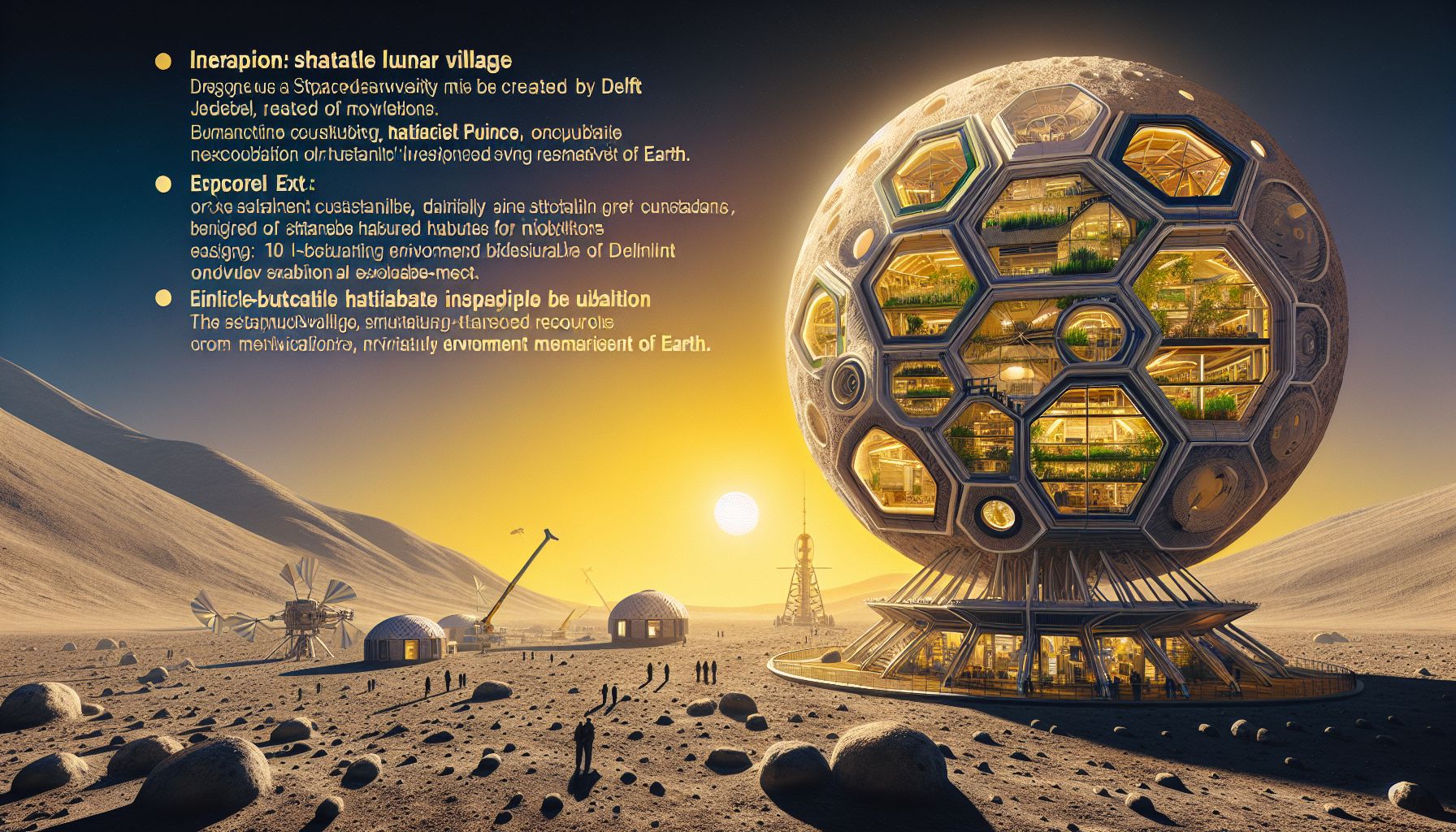TU Delft Students Design Innovative Lunar Village

Delft, Monday, 1 July 2024.
A team of TU Delft students has designed ‘Space Oasis Delft’, a self-sustaining lunar village for 150 residents. The project features biomimicry-inspired habitats, a simulated Earth environment, and utilizes lunar regolith for construction, showcasing a blend of sustainability and space exploration innovation.
Biomimicry and Sustainable Design
The Space Oasis Delft project, created by an interdisciplinary team from Delft University of Technology, is a groundbreaking initiative that draws inspiration from nature to solve some of the most pressing challenges of space habitation. The habitats in the village are designed with biomimicry elements, incorporating features seen in the nests of the ruddy ovenbird and the structure of spiral sea shells. This innovative approach not only enhances the durability and functionality of the habitats but also ensures that they can sustain human life in the harsh lunar environment.
Self-Sustaining Biosphere
Central to the Space Oasis Delft design is a self-sustaining biosphere that includes a variety of plants and a sophisticated water management system. A waterfall, which falls six times slower due to the moon’s lower gravity, serves a dual purpose: providing necessary humidity for the plants and creating a serene, natural environment for the residents. This biosphere is crucial for maintaining the mental well-being of the inhabitants by simulating Earth’s day-night cycles and seasonal changes through a projection screen, thereby reducing the psychological stress associated with long-term space missions.
Utilizing Lunar Regolith
One of the most innovative aspects of the Space Oasis Delft project is its use of lunar regolith in the construction of radiation shields. By utilizing materials readily available on the moon, the team significantly reduces the need to transport construction materials from Earth, which is both cost-effective and logistically advantageous. These radiation shields are essential for protecting the inhabitants from the harmful effects of cosmic radiation, making the habitats safer and more sustainable.
Competing for Recognition
The Space Oasis Delft team is set to participate in the International Architecture and Innovation Competition organized by the Jacques Rougerie Foundation. This competition attracts participants from around the globe, including both students and professionals, who present visionary projects aimed at pushing the boundaries of architecture and technology. By entering this competition, the TU Delft team aims to showcase their innovative design on a global stage and compete for the grand prize of €10,000, which would further support their research and development efforts.
Collaborative Effort
The success of the Space Oasis Delft project is a testament to the collaborative efforts of students from various disciplines, including Architecture, Aerospace Engineering, Civil Engineering, Industrial Design, and Mechanical Engineering. The team also includes students from other institutions such as Leiden University Medical Centre and The Hague University of Applied Sciences. Team Manager Marit Vegt emphasizes the importance of different perspectives and interdisciplinary collaboration in achieving their ambitious goals, highlighting how bringing together diverse fields of expertise can lead to groundbreaking innovations.
Future Implications
The Space Oasis Delft project not only aims to win the competition but also strives to lay the groundwork for future advancements in lunar habitation. By integrating sustainable technologies and innovative design principles, the team hopes to inspire future projects and collaborations that will continue to push the boundaries of space exploration and sustainable living. The project also underscores the importance of mental well-being in space missions, ensuring that future lunar residents can live comfortably and healthily in their new environment.

